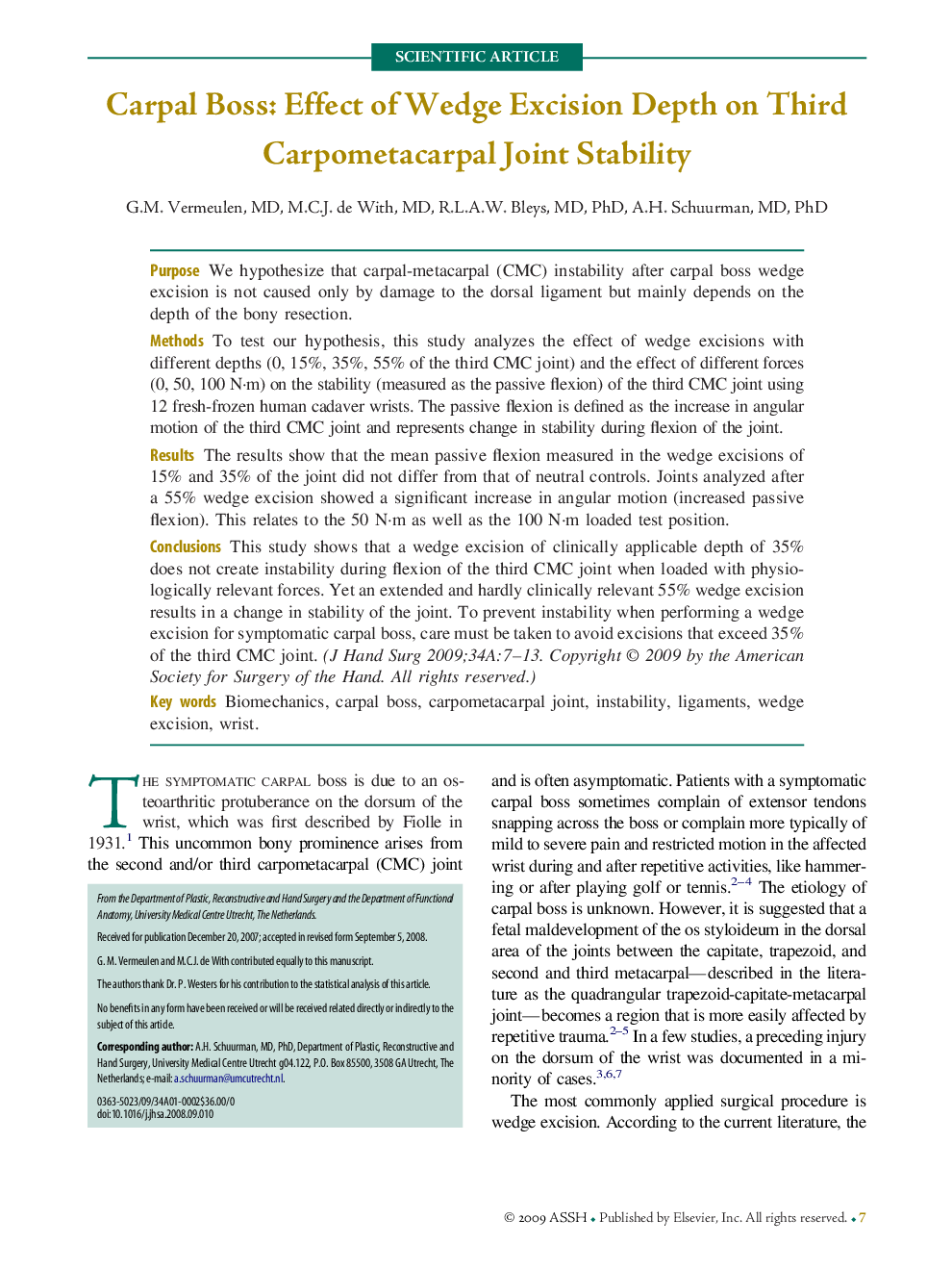| Article ID | Journal | Published Year | Pages | File Type |
|---|---|---|---|---|
| 4069301 | The Journal of Hand Surgery | 2009 | 7 Pages |
PurposeWe hypothesize that carpal-metacarpal (CMC) instability after carpal boss wedge excision is not caused only by damage to the dorsal ligament but mainly depends on the depth of the bony resection.MethodsTo test our hypothesis, this study analyzes the effect of wedge excisions with different depths (0, 15%, 35%, 55% of the third CMC joint) and the effect of different forces (0, 50, 100 N·m) on the stability (measured as the passive flexion) of the third CMC joint using 12 fresh-frozen human cadaver wrists. The passive flexion is defined as the increase in angular motion of the third CMC joint and represents change in stability during flexion of the joint.ResultsThe results show that the mean passive flexion measured in the wedge excisions of 15% and 35% of the joint did not differ from that of neutral controls. Joints analyzed after a 55% wedge excision showed a significant increase in angular motion (increased passive flexion). This relates to the 50 N·m as well as the 100 N·m loaded test position.ConclusionsThis study shows that a wedge excision of clinically applicable depth of 35% does not create instability during flexion of the third CMC joint when loaded with physiologically relevant forces. Yet an extended and hardly clinically relevant 55% wedge excision results in a change in stability of the joint. To prevent instability when performing a wedge excision for symptomatic carpal boss, care must be taken to avoid excisions that exceed 35% of the third CMC joint.
